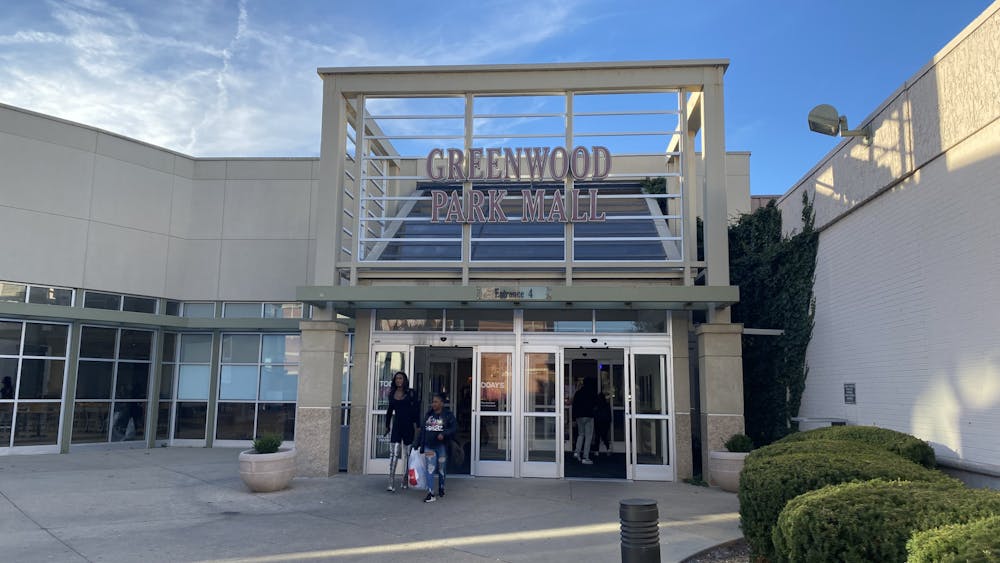When freshman Amogh Kedia first stepped foot on campus, an IU employee told him there had been a mix-up.
The University hadn’t assigned him a permanent dorm room.
After traveling the 8,400 miles from his hometown in Hyderabad, India, Kedia was sent to the 10th-floor lounge in Forest Quad, Tower A.
He and three other international students would call this room their home for their first two months of college.
Four bunk beds and a few couches were crammed in the small overflow lounge. They had no lockers or space for privacy.
Kedia and his Korean and Chinese lounge-mates were forced to live out of their suitcases. Not knowing who their roommates would be or where they would be moved to, they were unable to buy microwaves or other appliances. They were unable to settle in.
International students represent 16 percent of all students in Residential Programs and Services housing. However, they comprised a disproportionate 36 percent of all students living in lounge housing this fall.
Kedia expected to get what he paid for. He expected a stable home to help him with the transition to American life.
RPS gave them no reason for their placement in overflow housing or any indication of how long they would be staying there.
Kedia paid a third-party agent to help submit his application and housing registration to IU. RPS sent housing reminder emails to Kedia’s new university email account, but he did not know how to access it.
Kedia emailed RPS six different times for an explanation. He tried turning to his resident assistant, sophomore Aja Morrow.
“I didn’t have any answers, and I don’t think anyone else did,” Morrow said. “A lot of them really wanted to be out of there. They just wanted homes.”
Although RPS has decreased the total number of overflow housing students from last year, the proportion of international students has risen.
International students are often overrepresented in overflow housing because of their tendency to miss housing deadlines, said Assistant Director for Housing Assignments Sara Ivey Lucas.
Many of these students do not find out about their admission until just before the May 1 housing deadline, Lucas said.
“International students have to work though getting their visa. They have to work out different financial pieces,” Lucas said. “They’re put a bit behind everyone else.”
The majority of international students won’t apply to IU until after January, Director of International Admissions Matt Beatty said. Although admissions officials work toward a quick turn-around, it takes longer to process international applications. It involves converting grade point averages and accounting for unique curriculum and English testing requirements.
Admissions and RPS are separate university entities, often causing administrative tasks to take longer to complete.
Similarly, many international students will also pay third party agents thousands of dollars to translate, edit and submit their application materials to U.S. universities.
Once admitted by IU, international students are often left to meet housing and orientation application deadlines without the help of an agent or translator.
RPS sends emails every two to three weeks to all enrolled students with pending housing registration. But if international students have not confirmed their enrollment, or if they don’t know how to access their University email account, they won’t receive the reminders.
International students are not given any special reminders or emails about deadlines, Lucas said.
When it comes to housing, they are treated like all other students.
Overflow housing was the first impression of IU for Kedia and his parents, who were reluctant to let him leave his home country. The family had paid for an agent to ensure that all forms were sent in. They invested in housing, tuition and travel fees.
“I was pissed,” Kedia said. “It costs a shit-ton of money to come here, and I was expecting something great.”
* * *
The University advocates for a diverse international experience, admitting more and more international students every year. Meanwhile, many in the international community are being placed into overflow lounges and also dealing with the eviction from a place they used to call home, the Leo R. Dowling International Center.
Located on South Jordan Avenue, the center had served as the central hub for international student groups, conversation hours and social events since 1958. Last spring, the Office of International Services announced that the Leo R. Dowling International Center would be re-purposed.
The Office of International Services and the Office of Overseas Study were forced to move out of their Franklin Hall office spaces in order to comply with University restructuring plans.
The OIS combined with the Office of International Admissions, and both offices were moved to the Poplars building on Seventh Street. No space was created to serve as a new center for international students.
The Leo R. Dowling International Center’s name has not changed, but the building now houses the Office of Overseas Study.
There are currently no plans to establish a replacement international center for students, Vice President for International Affairs David Zaret said.
Sandy Britton, formerly the director of the international center, is now the associate director of international student life. Her new location in the Poplars Building is miles away from the southeast side of campus, where the highest concentration of international students lives.
The offices were consolidated to increase cooperation and space, said Rendy Schrader, director of International Student and Scholar Advising. The space in the Leo R. Dowling Center was more conducive to the size of the Office of Overseas Studies, Schrader said. Staffing and budget stayed fairly consistent, according to IU budget data.
But for international student group leaders, it has meant the loss of a meeting location, and for some, a home.
In early August 2012, the leaders of nine different international student groups sent a letter to IU President Michael McRobbie calling for a replacement location.
Associate President of International Services Christopher Viers responded to the students’ letter. All previous international programming has continued, he said, but it will no longer be housed in one location. Events such as conversation hours and practice English tutorials have moved to residence halls and the Indiana Memorial Union.
Viers said the move would help “facilitate greater interaction among international and domestic students.”
However, Schrader said program attendance has decreased this year.
Jose Toledo, a Peruvian student in the Intensive English Program, said the closure has fragmented international student groups.
International student centers are uncommon among schools with high numbers of international students. Of the top 10 American academic institutions with the greatest number of international students, only two have international student centers, according to the university websites.
IU is 11th on the list, and numbers of international students are climbing. When it comes to international student enrollment, the University has been ahead of the curve. Yet after 50 years, it is taking away the central location for these students.
For Toledo, the lack of an international student center reflects poorly on the University. He visited the center at least once a week last year. The repurposing has meant his group, the International Latin American and Spanish Students Association, no longer has a place to meet.
Toledo said his impression of IU before enrolling was based solely off the IU-Bloomington and OIS websites. The IU-Bloomington website directs students to read about the “more than 60 international student groups on campus.”
Of the list of 34 international student group actually listed on the OIS page, 16 of the linked websites are either outdated, incorrect or result in an error. Of the 40 international student organizations listed on a flier at the OIS, only 20 of them are actively involved or have international student participation, Britton said.
International student organization membership has become increasingly comprised of American students interested in studying abroad or learning a second language, Britton said. The focus on international student involvement has waned.
Toledo said he feels the University often portrays an external image of the international student community that many students find does not match the reality on campus.
“It’s two-faced,” Toledo said. “They call it multicultural diversity, but this is marketing. It results in paying, paying, paying, with little benefits. It’s a deception.”
* * *
Amid Welcome Week move-ins, Morrow, the 10th-floor RA, heard frustrated voices coming from a room down the hall.
An international student, one of 11 on Morrow’s floor at the time, was attempting to explain to her American roommate how she wanted the beds arranged.
The domestic roommate had requested that the beds be bunked vertically, but the international student had hoped for an L-shaped loft.
“I had to go in there and find out what was causing them distress,” Morrow said. “I had them draw a picture.”
Communicating with some international students takes extra initiative. A handful of her international residents are outgoing and comfortable approaching her, but others tend to be more reserved and might fear she won’t understand them, she said.
Morrow was not given any formal training on how to best communicate and engage international student residents, aside from a few tips, she said.
“A lot of us RAs were blind-sided,” Morrow said. “We don’t really understand what they’re going through.”
RPS does not organize facility-wide training on how to cater to international students, Director of Forest Residence Center Allyson Rafanello said, because the numbers of international residents vary from floor to floor.
Despite Morrow’s efforts to ease resident communication, the culture and language barrier can become too difficult for some international and domestic roommates. One of Morrow’s international residents decided to switch dorm rooms in order to move in with a friend from her home country, Morrow said.
The importance of making connections in an international community was one of the main themes present in McRobbie’s 2008 International Strategic Plan.
“These (international) students find themselves working together on classroom projects, living in IU residence halls, studying in the libraries, enjoying student gatherings and attending the numerous intercultural and social events on campus,” the document states. “American and international students not only form friendships but also learn to understand more about one another’s cultural and social backgrounds.”
This cross-cultural participation is seriously lacking on the IU campus, said Paul Chen, president of the Chinese Student and Scholar Association. He said it is apparent among Chinese students, who make up about 50 percent of the international student population.
The size of the population is part of the problem, Chen said, because it provides Chinese students with a comfortable safety net of similar friends who speak the same language. For many of them, IU is much more like an international program in their home country, he said. It’s like they never left China.
Freshman Eryu Long, a Chinese student, lives on the 10th floor of the opposite wing of Forest, Tower B. She has a Chinese roommate and said she rarely speaks to American students on her floor. Long has enjoyed IU but has struggled to learn English.
She said she feels that if she were to socialize with more American students, her English might be stronger.
Interacting with students of different backgrounds is crucial to the freshman year experience, Morrow said. It requires an effort on behalf of domestic and international students, she said.
“They only have four years here,” she said. “The earlier you’re exposed to it, the earlier you get used to it.”
* * *
A mixer at the start of the semester was the first time all of Morrow’s international students attended a floor activity. But by then, Kedia and his three international roommates from the lounge had moved out.
Two months into the school year, after developing friendships on his Forest floor, Kedia was forced to move to a different dorm entirely — Eigenmann Hall. It took him about a month to make friends on his new floor, and he has now lost all contact with his Forest friends.
Kedia, who attended an international boarding school in India, said he has had no problem socializing with American students. He gets along with his new roommate from Alabama, who came from a diverse high school. They immediately hit it off, and often skied together in the winter.
But the same cannot be said about every international student experience, Kedia said.
The transition presents different challenges for different personalities, cultures and levels of English proficiency.
Not every international student has trouble engaging with American students. Not every international student lived in overflow housing. Not every international student struggles with language.
The Office of International Services provides many students with academic and personal counseling. It offers assistance with visas, finances and other aspects of the international student transition.
Students like Chen have found international student groups that facilitate community.
But if IU hopes to continue to champion its international community, it must continue to improve the environment for its international students.
“We need to push ourselves,” Chen said. “It’s our problem, but it’s also an IU problem.”





